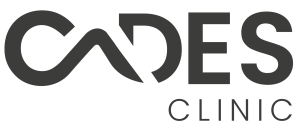Gum contouring is a procedure to eliminate or reduce excess gum tissue. At the same time, your dentist reshapes your gum line during this cosmetic treatment in order to enhance your smile and create the optimal outcome for you. Unfortunately, dental insurance will not cover this procedure.
Excess gum tissue can lead to serious oral health issues. The excess tissue inhibits proper tooth cleaning and leads to infections like periodontal disease.
Benefits
While gum contouring’s primary aim is to enhance the aesthetics of your smile, it also can have long-term advantages for the health of both teeth and gums. Excess gum tissue provides bacteria an avenue to gather around teeth where toothbrushes or floss cannot reach, increasing your risk for gingivitis and gingival inflammation.
Gum contouring involves extracting excess gum tissue that obscures your teeth, revealing more of their natural beauty and making your smile more vibrant. A dentist will numb the area before beginning and use a scalpel or laser to trim away extra tissue; sutures may be used if necessary to hold in place any extra pieces that remain.
Some patients can develop a “gummy” smile due to hereditary factors or side effects from certain medications, which can throw off the balance of their smile and make it less healthy looking. Gummy smiles may even make your teeth seem smaller than they actually are! Luckily, cosmetic procedures like teeth whitening or porcelain veneers can resolve this issue!
Procedure
Gum contouring is a minimally-invasive procedure in which excess gum tissue is removed or trimmed away to enhance the shape of your gum line. Your dentist uses scalpels, radiosurgery or lasers to cut away excess tissue. They may also use free gingival gum grafting procedures by taking tissue from the roof of your mouth and stitching it to the area in need of contouring.
Under local anesthesia, the surgery is performed. While you may experience some temporary discomfort afterward, most patients are back to work and daily activities shortly afterward.
After having surgery, it’s essential to eat soft foods for at least the first week post-op. Hard and chewy foods may cause discomfort or bleeding and strenuous activity can increase blood flow to gums which could result in swelling or tenderness; your doctor may prescribe over-the-counter pain relievers as needed to help manage discomfort.
Recovery
Gum contouring is a relatively minor cosmetic procedure with a short recovery period. After gum contouring, you should expect some swelling and tenderness which usually subsides within a few days; an over-the-counter pain reliever should help to manage discomfort; it is wise to refrain from chewing foods such as nuts or seeds as these could damage gum tissue.
Avoid spicy food as this may irritate the gums. Instead, opt for soft and cool foods like yogurt, eggs, mashed potatoes, canned or baked fruits, Jell-O and custard for optimal dental health. Rinsing with lukewarm salt water solution may also be effective at clearing away debris and food particles from the teeth.
After your surgery is completed, brush gently and avoid areas in your mouth where surgery was conducted. If any concerns arise regarding post-surgery care, do not hesitate to reach out and schedule a follow-up appointment with your dentist.
Cost
Gum contouring costs can vary significantly depending on its scope, location and sedation needs; adding dental sedation may further increase costs.
Reshaping is typically performed under local anesthesia and utilizes scalpels or lasers to remove any extra tissue, correcting problems like an uneven gum line and correcting issues like gummy smiles or overly-gummed smiles. Furthermore, this procedure helps treat periodontal disease by eliminating tissues that cover bacteria and plaque on gums.
Many dentists and periodontists offer gum contouring procedures at their clinics, with some also working with third-party financing companies to make them more cost-effective. You should discuss all available payment plans with your physician in order to find one that suits you; you may receive a discounted offer by opting for in-house payment plans rather than third-party lenders.
Disclaimer: The content on this blog is intended for general informational purposes only. It is not a substitute for professional medical advice, diagnosis, or treatment. Always consult qualified healthcare providers for personalized advice. Information regarding plastic surgery, dental treatment, hair transplant, and other medical procedures is educational and not a guarantee of results. We do not assume liability for actions taken based on blog content. Medical knowledge evolves; verify information and consult professionals. External links do not imply endorsement. By using this blog, you agree to these terms.










